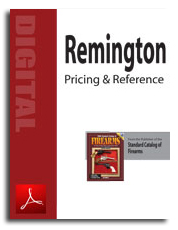 Are You in the Market for a Remington Firearm?
Are You in the Market for a Remington Firearm?
Know what your Remington firearms are worth with this up-to-date 54-page .PDF download from the 19th edition of Standard Catalog of Firearms.
* Completely updated pricing for Remington firearms with new entries and photos
* Links to manufacturers’ website
Remington 3rd Model Beals Revolver
Remington Rider Revolver
Remington Beals Army Revolver
Remington Beals Navy Revolver
Remington 1861 Army Revolver
Remington 1861 Navy Revolver
Remington New Model Army Revolver
Remington New Model Navy Revolver
Remington New Model Single-Action Belt Revolver
Remington Rider Double Action Belt Revolver
Remington New Model Police Revolver
Remington New Model Pocket Revolver
Remington Rider Derringer
Remington Zig-Zag Derringer
Remington Elliot Derringer
Remington Vest Pocket Pistol
Remington Elliot Single-Shot Derringer
Remington Over-and-Under Derringer
Remington Early Type I
Remington Type I Mid-Production
Remington Type I Late Production
Remington Type II
Remington Type III
Remington Rider Magazine Pistol
Remington Model 1865 Navy Rolling Block Pistol
Remington Model 1867 Navy Rolling Block Pistol
Remington Model 1871 Army Rolling Block Pistol
Remington Smooth No. 1 Revolver
Remington Smooth No. 2 Revolver
Remington Smooth No. 3 Revolver
Remington No. 4 Revolver
Remington Iroquois Revolver
Remington Model 1875 Single-Action Army
Remington Model 1890 Single-Action Army
Remington Model 1891 Target Rolling Block Pistol
Remington Model 1901 Target Rolling Block
Remington Mark III Signal Pistol
Remington 1911 and 1911A1
Remington Model 51
Remington Model 53
Remington Model 1841 “Mississippi Rifle”
Remington Model 1861 U.S. Rifle Musket
Remington Model 1863 Zouave Rifle
Remington Breech-Loading Carbine
Remington Revolving Rifle
Remington Beals Rifle
Remington U.S. Navy Rolling Block Carbine
Remington Model 1867 Navy Cadet Rifle
Remington Rolling Block Military Rifle
Remington Standard No. 1 Sporting Rifle
Remington Long-Range Creedmoor Rifle
Remington Mid-Range Target Rifle
Remington Short-Range Rifle
Remington Black Hills Rifle
Remington Shotgun
Remington Baby Carbine
Remington Model 1-1/2 Sporting Rifle
Remington Model 2 Sporting Rifle
Remington No. 4 Rolling Block Rifle
Remington Model No. 4 S Military Rifle
Remington No. 5 Rolling Block Rifle
Remington No. 5 Sporting or Target Rifle
Remington Model 1897
Remington Carbine
Remington No. 6 Rolling Block Rifle
Remington No. 7 Rolling Block Rifle
Remington Hepburn No. 3 Rifle
Remington No. 3 Match Rifle
Remington No. 3 Long-Range Creedmoor Rifle
Remington No. 3 Mid-Range Creedmoor Rifle
Remington No. 3 Long-Range Military Rifle
Remington No. 3 Schuetzen Match Rifle
Remington No. 3 High-Power Rifle
Remington Keene Magazine Rifle
Remington Sporting Rifle
Remington Army Rifle
Remington Navy Rifle
Remington Carbine
Remington Frontier Model
Remington Lee Magazine Rifle
Remington Model 1879 Sharps Mfg.
Remington Model 1879 U.S. Navy Model
Remington Model 1879 Sporting Rifle
Remington Model 1879 Military Rifle
Remington Model 1882 Army Contract
Remington Model 1885 Navy Contract
Remington Model 1882 & 1885 Military Rifles
Remington Model 1882 & 1885 Sporting Rifle
Remington Model 1882 & 1885 Carbine
Remington Model 1899
Remington Sporting Rifle
Remington Lebel Bolt-Action Rifle
Remington Mosin-Nagant Bolt-Action Rifle
Remington U.S. Model 1917 Magazine Rifle
Remington Whitmore Model 1874
Remington Model 1882 Shotgun
Remington Model 1883 though 1889 Shotgun
Remington Model 1893 (No. 9)
Remington Hammerless Shotgun Model 1894
Remington Model 1900 Shotgun
Remington Model 8
Remington Model 8A
Remington Model 8C
Remington Model 8D Peerless
Remington Model 8E Expert
Remington Model 8F Premier
Remington Model 81 Woodsmaster
Remington Model 81A
Remington Model 81D Peerless
Remington Model 81F Premier
Remington Model 12 & 12A
Remington Model 12B
Remington Model 12C
Remington Model 12C N.R.A. Target
Remington Model 12CS
Remington Model 12D Peerless
Remington Model 12E Expert
Remington Model 12F Premier
Remington Model 121 and 121A
Remington Model 121D Peerless
Remington Model 121F Premier
Remington Model 121S
Remington Model 121SB – Smoothbore
Remington Model 14 and 14A
Remington Model 14R
Remington Model 14-1/2
Remington Model 16
Remington Model 141
Remington Model 25
Remington Model 24
Remington Model 241 Speedmaster
Remington Model 241
Remington Model 241D Peerless
Remington Model 241E Expert
Remington Model 241F Premier
Remington Model 550A
Remington Model 550P
Remington Model 55-2G
Remington Model 30A “Express”
Remington Model 30S
Remington Model 41A “Targetmaster”
Remington Model 41AS
Remington Model 41P
Remington Model 41SB
Remington Model 33
Remington Model 33 NRA
Remington Model 34
Remington Model 34 NRA
Remington Model 341A
Remington Model 341P
Remington Model 341 SB
Remington Model 510
Remington Model 510P
Remington Model 510 SB
Remington Model 510 X
Remington Model 511 A
Remington Model 511 P
Remington Model 511 X
Remington Model 512 A
Remington Model 512 P
Remington Model 512 X
Remington Model 514
Remington Model 514 P
Remington Model 514 BC
Remington Model 37
Remington Model 37-1940
Remington Model 504
Remington Model 504 Custom
Remington Model 504-T LS HB
Remington Model 547
Remington Model 511 Scoremaster
Remington Model 513 TR Matchmaster
Remington Model 513 S
Remington Model 521 TL Jr.
Remington Model 760
Remington Model 760 Carbine
Remington Model 760D Peerless
Remington Model 760F Premier
Remington Model 760F Gold Inlaid
Remington Model 760 Bicentennial
Remington Model 760 ADL
Remington Model 760 BDL
Remington Model 552A Speedmaster
Remington Model 552 BDL
Remington Model 552 BDL Deluxe Speedmaster NRA Edition
Remington Model 552 NRA Edition Speedmaster
Remington Model 572 Fieldmaster
Remington Model 572 BDL
Remington Model 572SB
Remington Model 572 BDL Smoothbore
Remington Model 580
Remington Model 580 BR
Remington Model 580 SB
Remington Model 581
Remington Model 581 Left-Hand
Remington Model 581-S
Remington Model 582
Remington Model 591
Remington Model 592
Remington Model 740
Remington Model 740 ADL
Remington Model 740 BDL
Remington Model 742
Remington Model 742 BDL
Remington Model 742D Peerless
Remington Model 742F Premier (Game Scene)
Remington Model 742F Premier (Gold Inlaid)
Remington Model 742 Bicentennial
Remington Model 76 Sportsman
Remington Model 7600
Remington Model 7600D Peerless
Remington Model 7600F Premier
Remington Model 7600 Premier
Remington Model 7600 Synthetic
Remington Model 7600 Special Purpose
Remington Model 7600P Patrol Rifle
Remington Model 7600 Buckmasters ADF
Remington Model 7600 Custom Grade
Remington Model Six
Remington Model 7615 Tactical Pump Carbine
Remington Model 7615 Special Purpose Synthetic
Remington Model 7615 Camo Hunter
Remington Model 7615 Ranch Carbine
Remington Model 74 Sportsman
Remington Model Four
Remington Model 7400
Remington Model 7400 Synthetic
Remington Model 7400 Weathermaster
Remington Model 7400 Carbine
Remington Model 7400 Special Purpose
Remington Model 7400 Buckmasters ADF
Remington Model 7400 Custom Grade
Remington Model 750 Woodsmaster
Remington Model 750 Synthetic
Remington Model R15 VTR Predator Rifle
Remington Model R15 VTR Predator Carbine
Remington Model 10
Remington Model 11
Remington Model 12
Remington Model 66
Remington Model 66 Bicentennial Commemorative
Remington Model 76
Remington Model 77
Remington Model 10C
Remington Model 77 Apache
Remington Model 522 Viper
Remington Model 541 S Custom
Remington Model 541T
Remington Model 541T Heavy Barrel
Remington Model 597
Remington Model 597 Sporter
Remington Model 597 Stainless Sporter
Remington Model 597 LSS
Remington Model 597 SS
Remington Model 597 HB
Remington Model 597 HB Magnum
Remington Model 597 Magnum
Remington Model Magnum LS
Remington Model 597 Custom Target
Remington Model 597 Custom Target Magnum
Remington Model 597 LSS
Remington Model 597 Synthetic Scope Combo
Remington Model 597 TVP (Target/Varmint/Plinker)
Remington Model 597 Yellow Jacket
Remington Model 597 Blaze Camo
Remington Model 597 Pink Camo
Remington Model Five
Remington Model 40X-BR
Remington Model 40X Sporter
Remington Model 40X Centerfire
Remington Model 40XB Stainless
Remington Model 40XB BR
Remington Model 40XB Tactical Rifle
Remington Model 40XR KS Sporter
Remington Model 40XR KS Sporter
Remington Model XR-100 Rangemaster
Remington Model XC
Remington Model 673 Guide Rifle
Remington Model 720A
Remington Model 721
Remington Model 721 ADL
Remington Model 721 BDL
Remington Model 721A Magnum
Remington Model 722 BDL
Remington Model 725 ADL
Remington Model 725 Kodiak
Remington Model 78 Sportsman
Remington Model 600
Remington Model 600 Mohawk
Remington Model 600 Magnum
Remington Model 660
Remington Model 660 Magnum
Remington Model 700 ADL
Remington Model 700 ADL Synthetic
Remington Model 700 ADL Synthetic Youth
Remington Model 700 BDL
Remington Model 700 BDL LH (Left-Hand)
Remington Model 700 BDL (DM)
Remington Model 700 BDL LSS
Remington Model 700 BDL SS DM-Magnum Rifle
Remington Model 700 BDL SS Short Action
Remington Model 700 BDL SS Camo Special Edition (RMEF)
Remington Model 700 EtronX
Remington Model 700 Sendero
Remington Model 700 Sendero SF
Remington Model 700 Sendero SF-II
Remington Model 700 Sendero Composite
Remington Model 700 Mountain Rifle
Remington Model 700KS Mountain Rifle
Remington Model 700 Mountain Rifle (DM)
Remington Model 700 Safari Grade
Remington Model 700 RS
Remington Model 700 FS
Remington Model 700 BDL European
Remington Model 700 BDL Stainless Synthetic
Remington Model 700 BDL Stainless Synthetic (DM)
Remington Model 700 CDL
Remington Model 700 CDL SF Ltd.
Remington Model 700 Mountain Rifle Stainless Synthetic
Remington Model 700 LSS Mountain Rifle
Remington Model 700 Titanium
Remington Model 700 Varmint Special Synthetic
Remington Model 700 VS SF
Remington Model 700 Varmint Special Wood
Remington Model 700 Varmint Laminated Stock (VLS)
Remington Model 700 VS Composite
Remington Model 700 LV SF
Remington Model 700 VS SF II
Remington Model 700 VSF
Remington Model 700 LSS LH
Remington Model 700 SPS
Remington Model 700 SPS Stainless
Remington Model 700 SPS DM
Remington Model 700 SPS Youth
Remington Model 700 XCR
Remington Model 700 XCR (Rocky Mountain Elk Foundation)
Remington Model 700 Classic
Remington Model 700 Custom
Remington Model 700 Custom “C” Grade
Remington Model 700 AWR (Alaskan Wilderness Rifle)
Remington Model 700 APR (African Plains Rifle)
Remington Model ABG (African Big Game)
Remington Model 700 Safari KS Stainless
Remington Model 700 Police
Remington Model 700 Police DM
Remington Model 700 Police Lightweight Tactical
Remington Model 700 XCR Tactical Long Range Rifle
Remington Model 700 XCR Compact Tactical
Remington Model 700 SPS Buckmasters Edition
Remington Model 700 Alaskan Ti
Remington Model 700 SPS Varmint
Remington Model 700 LSS 50th Anniversary of the .280 Remington
Remington Model 700 VL SS Thumbhole
Remington Model 700 CDL Boone and Crockett
Remington Model 700 SPS Tactical
Remington Model 700 Tactical Weapons System
Remington Model 700 VTR
Remington Model 700 ML
Remington Model 700 ML Custom
Remington Model 700 MLS
Remington Model 700 MLS Custom
Remington Model 700 ML Youth
Remington Model Genesis Muzzleloaders
Remington Model Model 710
Remington Model Model 710 Youth
Remington Model 788
Remington Model Seven
Remington Model Seven FS
Remington Model Seven SS (Stainless Synthetic)
Remington Model Seven LSS
Remington Model Seven LS
Remington Model Seven MS
Remington Model Seven AWR
Remington Model Seven Youth
Remington Model Seven CDL
Remington Model Seven XCR Camo
Remington Model Seven 25th Anniversary Version
Remington Model Seven Predator
Remington Model 770
Remington Model 770 Youth
Remington Model 715 Sportsman
Remington Model 798
Remington Model 798 Stainless Laminate
Remington Model 798 SPS
Remington Model 798 Safari
Remington Model 799
Remington Model 1816 Commemorative Flintlock Rifle
Remington Model No. 1 Rolling Block Mid-Range
Remington Mid-Range Sporter Rolling Block
Remington Model SPR18 Single Shot Rifle
Remington Model SPR22 Double Rifle
Remington Model SPR94 Combo Gun
Remington Model 412
Remington Model 10A
Remington Model 11
Remington Model 11B Special
Remington Model 11D Tournament
Remington Model 11E Expert
Remington Model 11F Premier
Remington Model 11R
Remington Model 17
Remington Model 29
Remington Model 31
Remington Model 870 Wingmaster
Remington Model 870 Field Wingmaster
Remington Model 870 Field Wingmaster 16 Gauge
Remington Model 870 Wingmaster NRA Edition
Remington Model 870 Wingmaster Jr.
Remington Model 870 Field Wingmaster Small Bore
Remington Model 870 Magnum
Remington Model 870 Express
Remington Model 870 Express Synthetic
Remington Model 870 Express Synthetic Youth
Remington Model 870 Express Jr. NWTF Edition
Remington Model 870 Express Super Magnum
Remington Model 870 Express Super Magnum Fall Flight
Remington Model 870TA Trap
Remington Model 870TB Trap
Remington Model 870TC Trap
Remington Model 870 Express Deer Gun
Remington Model 870 Express Deer/Turkey Combo
Remington Model 870 Express Left-Hand
Remington Model 870 Express Super Magnum Turkey
Remington Model 870 Express Synthetic Deer
Remington Model 870 Express Combo
Remington Model 870 Express Youth Gun
Remington Model 870 Express Turkey
Remington Model 870 Express Camo Turkey
Remington Model 870 20 Gauge Express Youth Camo Turkey
Remington Model 870 Express Small Game
Remington Model 870 Express HD (Home Defense)
Remington Model 870 Classic Trap
Remington Model 870 Special Field
Remington Model 870 Rifle Deer Gun
Remington Model 870 Brushmaster Deer Gun
Remington Model 870 SPS-T Youth Turkey Camo
Remington Model 870 Express Youth Turkey Camo
Remington Model 870 Youth Deer Gun
Remington Model 870 Security
Remington Model 870 SPS-Camo
Remington Model 870 SPS Super Magnum Camo
Remington Model 870 SPS-BG Camo
Remington Model 870 SPS Fully Rifled Deer Gun
Remington Model 870 SPS Super Slug Deer Gun
Remington Model 870 SPS-T Camo
Remington Model 870 SPS-T Super Magnum Camo
Remington Model 870 SPS-T Camo NWTF 25th Anniversary
Remington Model 870 SPS-T Camo
Remington Model 870 SP-T Super Magnum Thumbhole
Remington Model 870 Dale Earnhardt Limited Edition
Remington Model 870 Marine Magnum
Remington Model 870 SPS
Remington Model 870 SPS-Deer
Remington Model 870 SPS-T
Remington Model 870 Police
Remington Model 870 Tac-2 SpecOps Stock
Remington Model 870 Tac-3 Speedfeed IV
Remington Model 870 Tac-3 Folder
Remington Model 870 Custom Grade
Remington Model 870 SP-T Thumbhole
Remington Model 870 SPS-T Super Mag
Remington Model 870 SPS-T/20
Remington Model 870 Special Purpose Thumbhole
Remington Model 870 XCS Marine Magnum
Remington Model 870 SPS MAX Gobbler
Remington Model 870 20 Ga. Lightweight Magnum
Remington Model 870 Wingmaster 100th Anniversary
Remington Model 870 with Claro Walnut
Remington Model 870 Express Magnum ShurShot Cantilever
Remington Model 870 Express Super Magnum Waterfowl
Remington Model 870 Express Magnum ShurShot Turkey
Remington Model 870 SPS ShurShot Turkey
Remington Model 870 Tactical Desert Recon

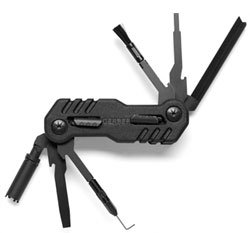 If you own an AR-15 or happen to carry an M-16 or M-4 in some far-off dusty place, you also very likely have a pouch full of gadgets you use to clean and maintain that rifle. Well, now Gerber has taken all those important tools and put them together in one place in the eFECT Military Maintenance Tool.
If you own an AR-15 or happen to carry an M-16 or M-4 in some far-off dusty place, you also very likely have a pouch full of gadgets you use to clean and maintain that rifle. Well, now Gerber has taken all those important tools and put them together in one place in the eFECT Military Maintenance Tool.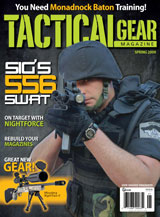
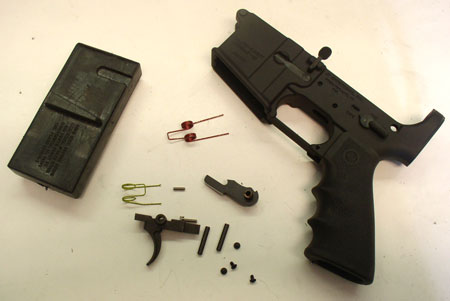
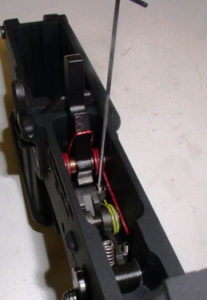
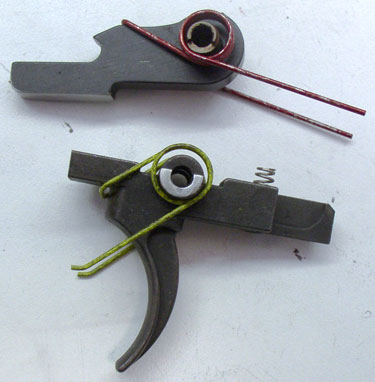

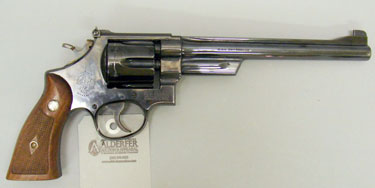
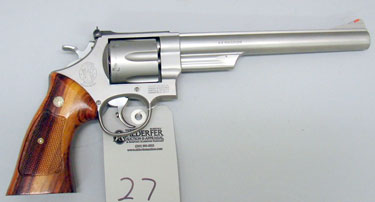
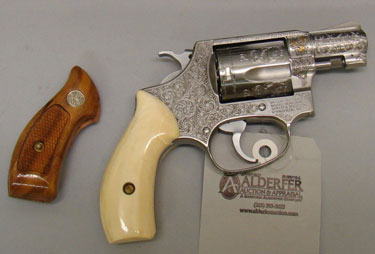
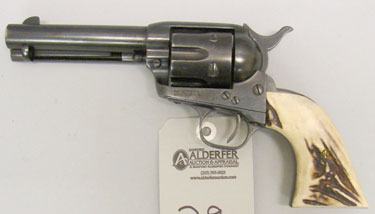
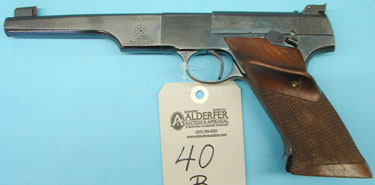
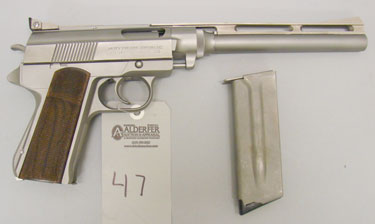
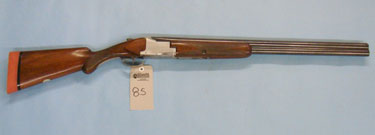
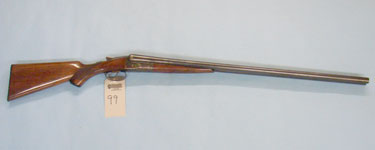
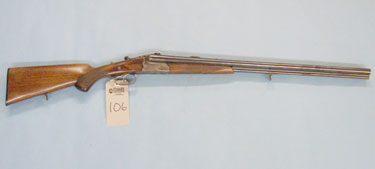
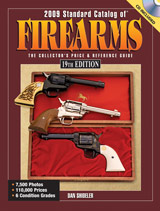 Buy the gun collectors' ultimate reference – The Standard Catalog of Firearms!
Buy the gun collectors' ultimate reference – The Standard Catalog of Firearms!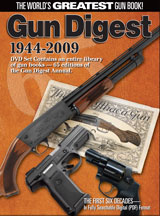
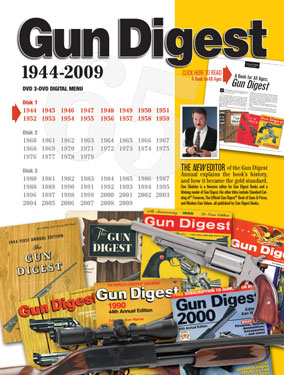
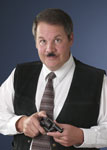
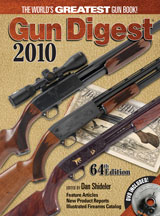
![Best Concealed Carry Guns In 2025 [Field Tested] Wilson Combat EDC X9S 1](https://gundigest.com/wp-content/uploads/Wilson-Combat-EDC-X9S-1-324x160.jpg)


![Best 9mm Carbine: Affordable PCCs [Tested] Ruger Carbine Shooting](https://gundigest.com/wp-content/uploads/Ruger-Carbine-Shooting-100x70.jpg)
![Best AR-15: Top Options Available Today [Field Tested] Harrington and Richardson PSA XM177E2 feature](https://gundigest.com/wp-content/uploads/Harrington-and-Richardson-PSA-XM177E2-feature-100x70.jpg)
